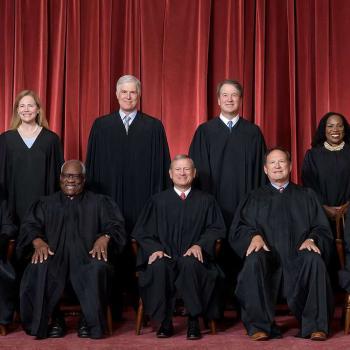An issue for election day: One of the problems in our political system today is that Congressional districts have been drawn up to ensure that each one is a “safe seat” for the incumbent and a particular political party. That means that voters almost never have competitive elections with genuine choices–unless, that is, the incumbent has a primary rival from the same party. This makes for ideological polarization, say many observers, as well as thwarting the basic processes of democracy.
From Reid Wilson, The solution to hyper-partisanship already exists, and it doesn’t involve gerrymandering:
Partisan gerrymandering has led to Congressional districts in which one party is so dominant that whichever candidate they nominate will win in November. About three-quarters of all districts, according to some estimates, are so overwhelmingly Republican or Democratic that the other party doesn’t have the slightest hope. So candidates from the dominant party have an incentive to align themselves with the partisan base that will turn out in a primary. Only hard-core partisans vote in a primary, meaning those candidates are playing to the extremes of either party — Republicans try to be the most conservative candidate in the field in deep-red districts, while Democrats try to be the most liberal candidate in sky-blue districts. The districts are drawn in such a way that there aren’t enough independents and voters of the minority party to punish extremism on either side.
The partisan bases that control those primaries are so deeply polarized, and hate the other side so much, that office-holders are discouraged from working across the aisle. In modern politics, if an elected official isn’t in open warfare with the other side, they must be a squish, and partisan bases quickly replace squishes with hard-liners. That’s hardly an incentive to work constructively with members of the other party on the major problems facing the nation.
The solution to that problem involves empowering voters in the middle of the political spectrum. If elected officials are held accountable to a wider swath of the electorate, the theory goes, they’ll be less likely to position themselves on the political extremes, and more likely to want to be seen as bipartisan problem-solvers.
Here’s how California and Washington got the middle involved: Both states used to have what election officials dubbed the “blanket primary.” Instead of choosing a Democratic primary ballot or a Republican primary ballot, voters could vote for any candidate in any race, across party lines — say, a Democrat for governor, a Republican for Senate, a Libertarian for county commissioner, a Green Party candidate for city council. The top vote-getter in each party would advance to the general election.
Uh, I don’t get it. So in California the only choice is likely to be between two Democrats? The Republican doesn’t even get on the ballot? California and Washington state are hardly good examples of non-partisanship. Don’t Democrats have a stranglehold on everything in those states? (Denizens of those states, please correct me if I’m wrong and explain how this works in practice.)
What might be some other ways of correcting paralysis by gerrymandering?











